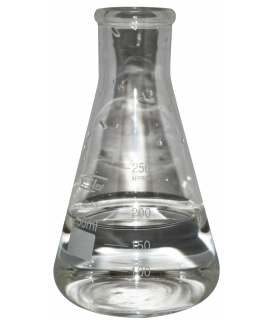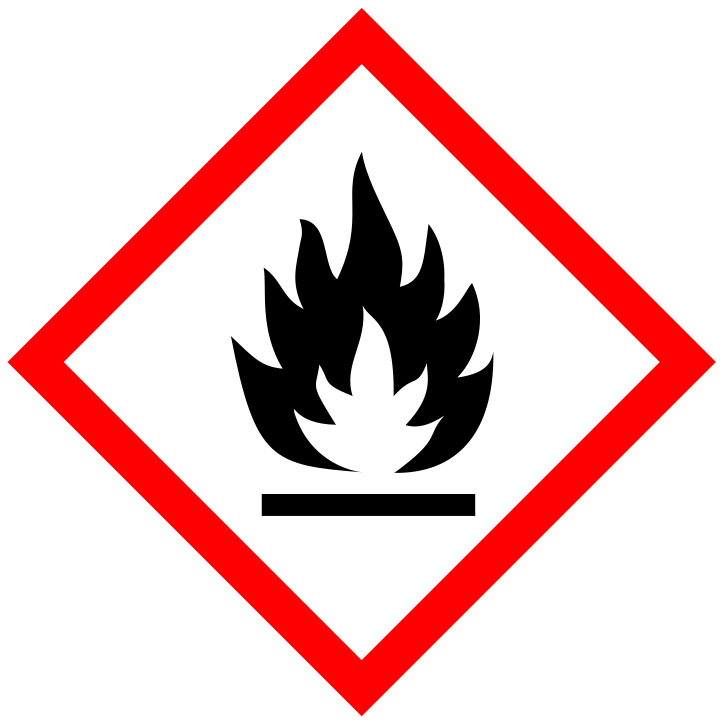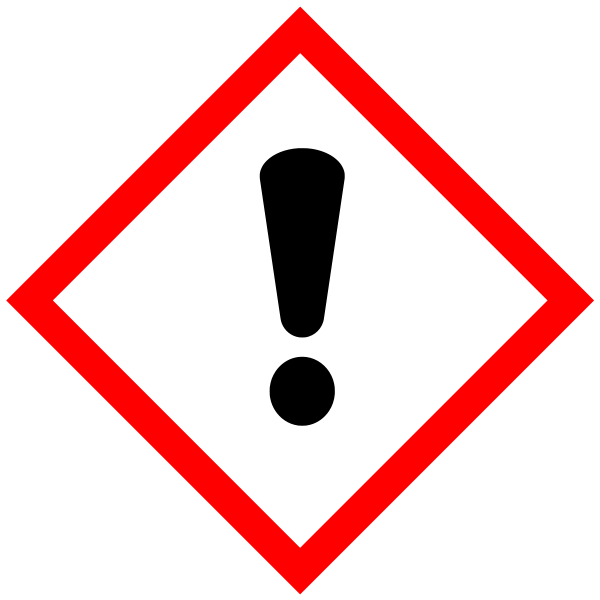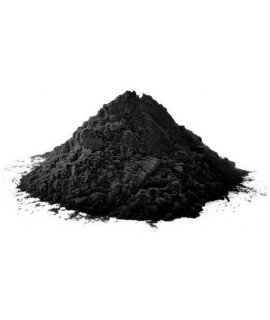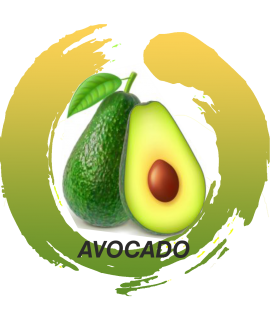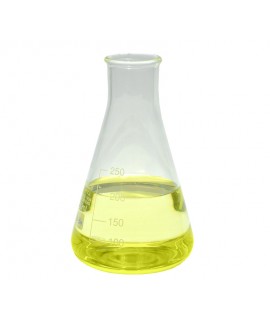ACETONE (propanone), 99%, L
3.99 €
00040402
Propanone, CAS 67-64-1, β-ketopropane, dimethyl ketone, 2-propanone, propan-2-one.
Parameter | Attribute |
Acetone | Propanone, β-ketopropane, dimethylketone, 2-propanone, propan-2-one |
Formula | C3H6O |
Structure |   |
IUPAC | 2-propanone |
CAS | 67-64-1 |
Molar mass | 58,08 g/mol |
Density | 0,7845 g/cm3 |
Solubility | It is miscible with water in any proportion. Mixes readily with benzene, diethyl ether, methanol, chloroform, ethanol. |
Acetone or propanone is an organic compound with the formula (CH3)2CO. It is the simplest and smallest ketone. It is a colorless, highly volatile and flammable liquid with a pungent odor. Acetone is readily miscible with water and is an important organic solvent in industry as well as in homes and laboratories.
In gas transportation, it is widely used as a solvent for the safe transport and storage of acetylene, which cannot be safely compressed as a pure compound. Vessels containing porous material are filled first with acetone, then with acetylene, which dissolves in acetone. One liter of acetone can dissolve approximately 250 liters of acetylene at a pressure of 10 bar.
In cosmetics, acetone is often a key component of cleaning products such as nail polish and superglue removers. However, it dissolves some plastics. Make-up artists use acetone to remove skin adhesives from wigs and moustache nets by dipping the object in an acetone bath and then using a stiff brush to remove the softened adhesive residue.
For dissolving organic compounds, acetone is a good solvent for many plastics and some synthetic fibers. It is used for thinning polyester resin, for cleaning the media used with it and for dissolving two-part epoxies and superglues until they harden. It is used as one of the volatile components of some paints and varnishes. As a high-performance degreasing agent, it is used in the preparation of metal prior to painting or soldering, and in the removal of rosin residues after soldering. Due to its dissolving properties, it dissolves many electronic components (e.g. polystyrene capacitors), making it unsuitable for cleaning many circuit boards.
In laboratories and educational institutions, acetone is used as a polar aprotic solvent in a variety of organic reactions such as SN2 reactions. The use of an acetone solvent is essential for Jones oxidation. It does not form an azeotrope with water. It is also used as a basic ketone in ketone recognition reactions. Acetone is fluorescent in the ultraviolet spectrum and its vapor can be used as a fluorescent tracer in liquid flow experiments. Acetone is used to precipitate proteins. Alternatives for protein precipitation are trichloroacetic acid or ethanol. Low-grade acetone is also commonly used in academic laboratories as a glassware rinse to remove residues and solids before the final wash. Acetone leaves a small amount of residue on the surface during drying, which is harmful to the surface samples. A mixture of acetone and dry ice is a popular cooling bath that maintains temperatures as low as -78°C as long as some dry ice is present.
In the cleaning industry, acetone is used as an effective degreasing agent for a variety of surfaces. It is commonly found in the cleaning and degreasing of painted surfaces, painting tools or surfaces prior to painting. The purer the acetone used, the less residue is left on the surface being cleaned.
In medicine, acetone is used as a solvent and as a denaturant in denatured alcohol. Acetone is also an excipient in some pharmaceutical drugs. Dermatologists use acetone and alcohol to chemically exfoliate dry skin in the treatment of acne. The most common substances used for chemical peeling are salicylic acid, glycolic acid, 30% salicylic acid in ethanol and trichloroacetic acid (TCA). Before exfoliation, the skin is cleansed and excess oil is removed with a degreasing compound. This process usually uses acetone, septicol or a combination of these reagents.
In the plastics industry, acetone is often used to polish printing surfaces on 3D printed models printed in ABS plastic. The method, known as acetone vapor bath ironing, involves placing the printed part in a sealed chamber containing a small amount of acetone and heating it to about 80 degrees Celsius for 10 minutes. This produces acetone vapor in the container. The acetone condenses evenly over the entire part, softening and liquefying the surface. The surface tension then flattens the semi-liquid plastic. When the part is removed from the chamber, the acetone evaporates, leaving a glassy smooth part that is free of scratches, patterns and visible layer edges that are features of raw 3D printed parts.
Important: Add the item to your basket, fill in the recipient's details and confirm your order. Thank you!
To save your precious time, we will deliver your order to your address at a time convenient for You!
*- The pictures of the goods may not correspond to the actual appearance, color, assembly or shape of the goods and their packaging. The information in the product description is of a general nature and may not correspond to the information on the packaging of the product and may not be the exact use of the product. The information given on the stocks and prices of goods may, in certain cases, differ from the actual prices and stocks of goods
Signal word: DANGER |
Hazard icons:
|
Danger phrases: H225 Highly flammable liquid and vapor H319 Causes severe eye irritation H336 May cause drowsiness or dizziness |
Precautionary statements: P210 Keep away from sources of heat, sparks, naked flames and hot surfaces. Do not smoke P305+P351+P338 In case of contact with eyes: wash gently with water for a few minutes. Remove contact lens if present and if easily removable. Continue to wash eyes P403+P233 Store in a well-ventilated place. Keep container tightly closed EUH066 Repeated exposure may cause dry or cracked skin |
00040402
Related products
(8 other products in the same category)


